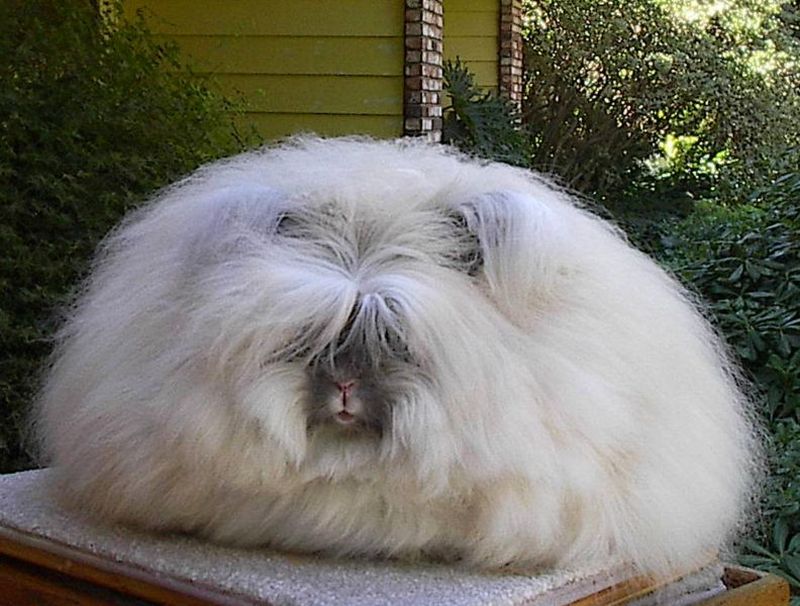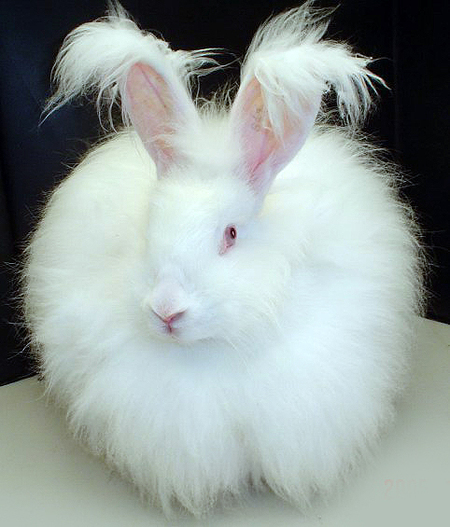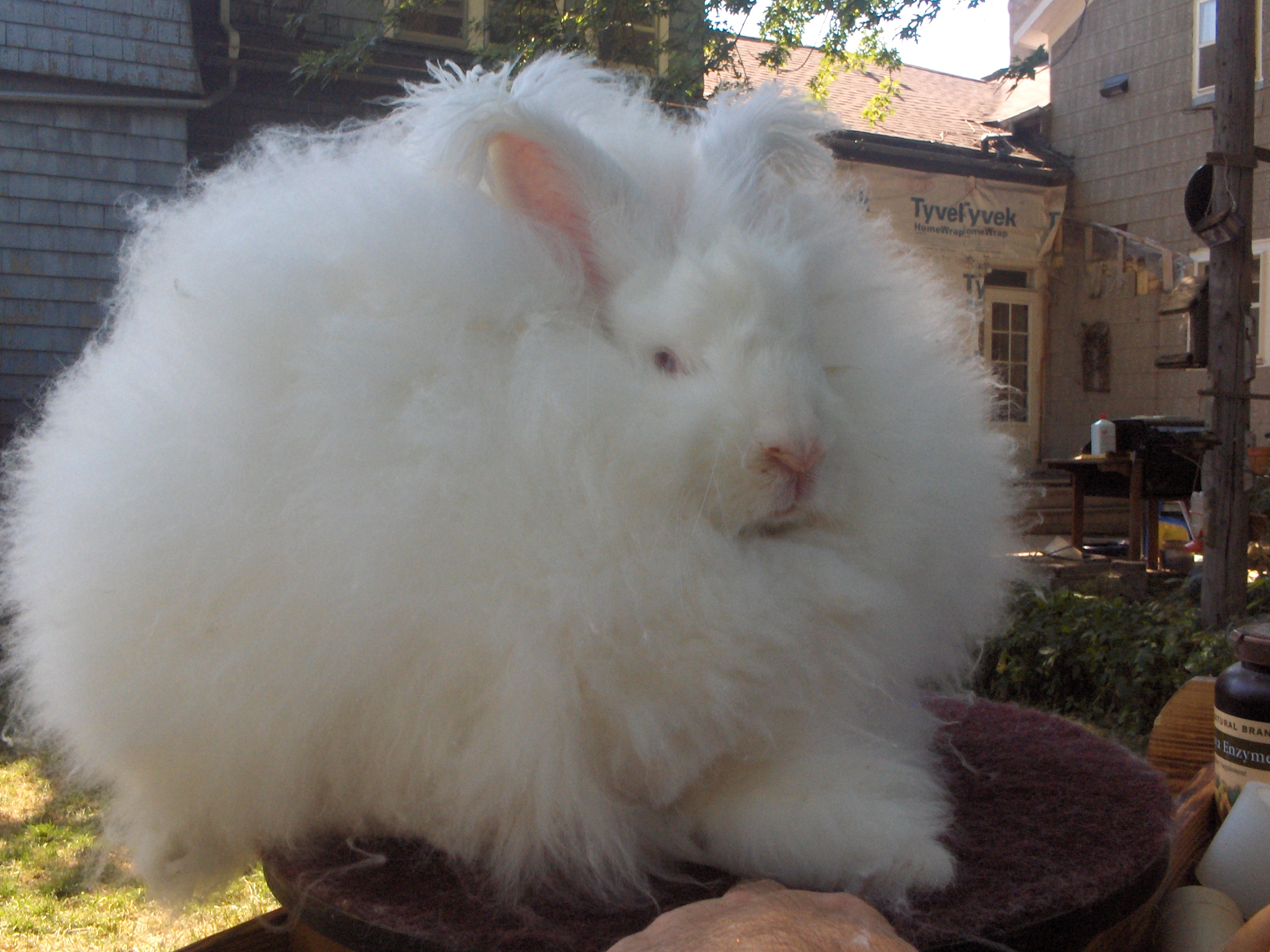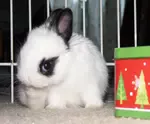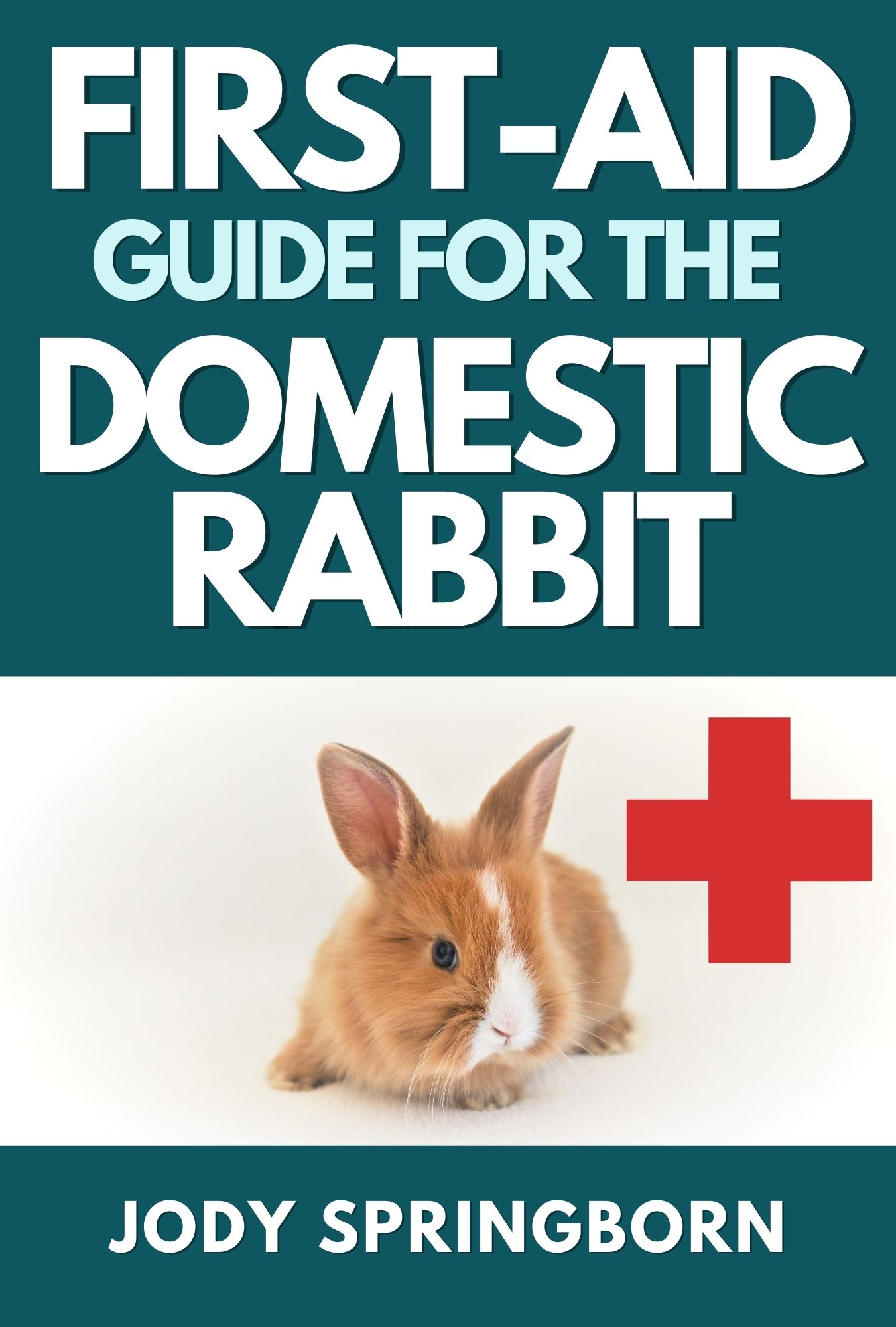- Home
- Grooming Long-Haired Rabbits
Grooming Long-Haired Rabbits
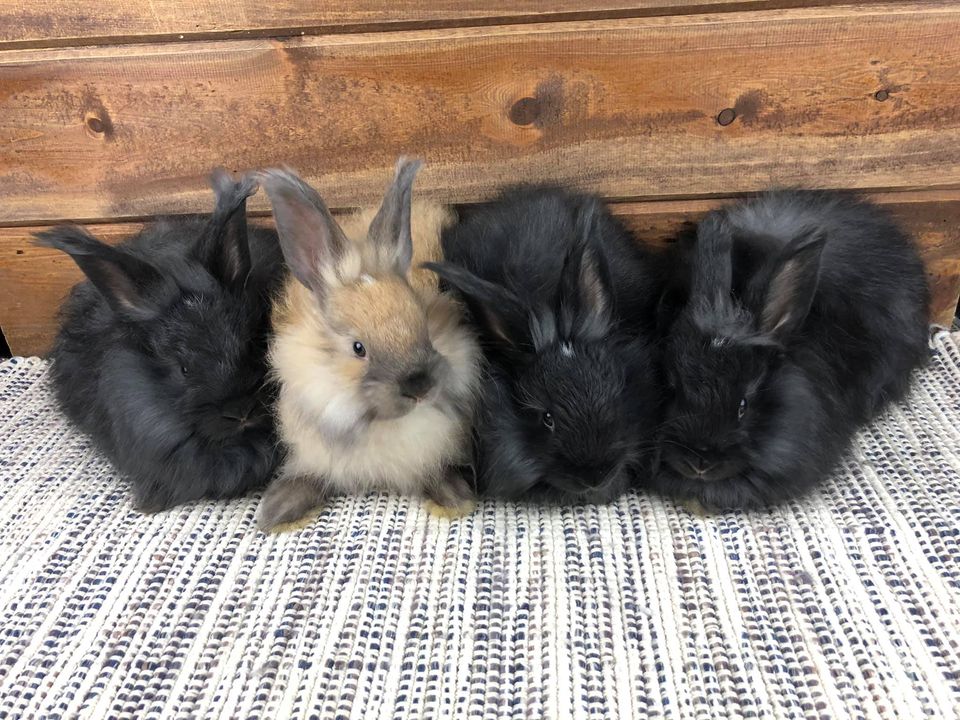 German Angora babies at 4-weeks-old.
German Angora babies at 4-weeks-old.Photo courtesy of Greenleaves Angoras.
Touching a Cloud
Grooming long-haired rabbits requires patience and some skill. There are several breeds that need more attention to grooming than their short-haired cousins. They include the Angora, Jersey Wooly, American Fuzzy Lop and sometimes Lionheads (a Lionhead bunny can have either a single mane or double mane gene).
Depending on the breed and individual bunny, these long-haired rabbits typically need to be groomed several times a week, if not daily, to keep their coat free from debris, parasites and mats.
Grooming Long-Haired Rabbits: Why It's So Important
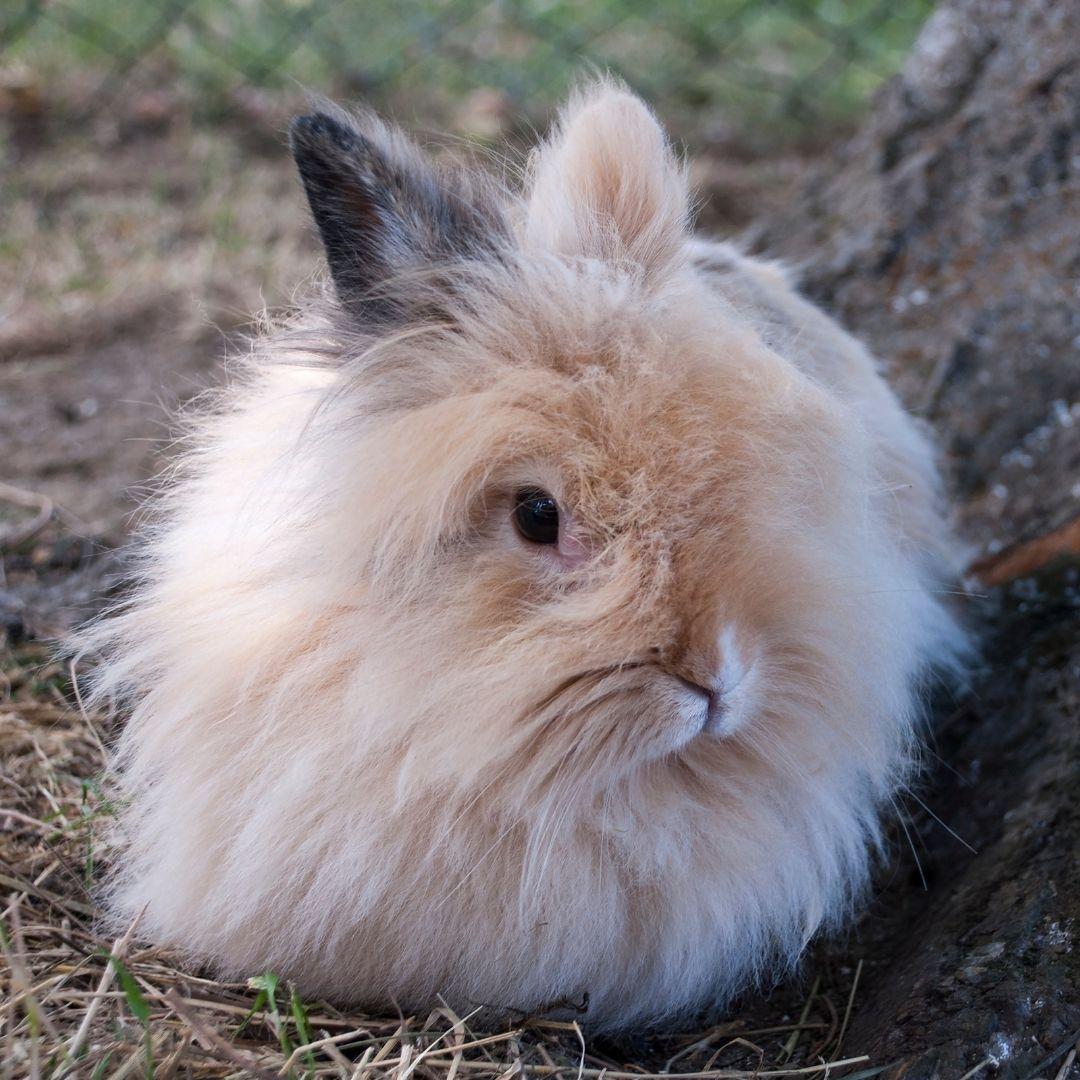
The fur tangles in areas where there is high friction - under the chin, back of the neck, under the arms and around the tail and groin area. If left unattended, mats form. In the most serious situations, mats can restrict movement to the point where the bunny is unable to move properly.
An unkempt long-haired bunny, with a messy bottom, attracts flies which may result in flystrike. This is when fly eggs hatch and the maggots burrow under the bunny's skin, releasing toxins which kill. Flystrike is usually discovered too late. The best way to prevent this is to make sure higher risk rabbits - such as disabled, elderly, overweight or long-haired bunnies - are regularly checked and groomed.
If combed regularly, a long-haired bunny doesn't need to have his whole coat clipped. However, if you don't have an interest in harvesting the fur for wool and you don't think you can commit to combing your bunny's fur regularly, it is better to keep the coat short.
Grooming Long-Haired Rabbits: Things to Know
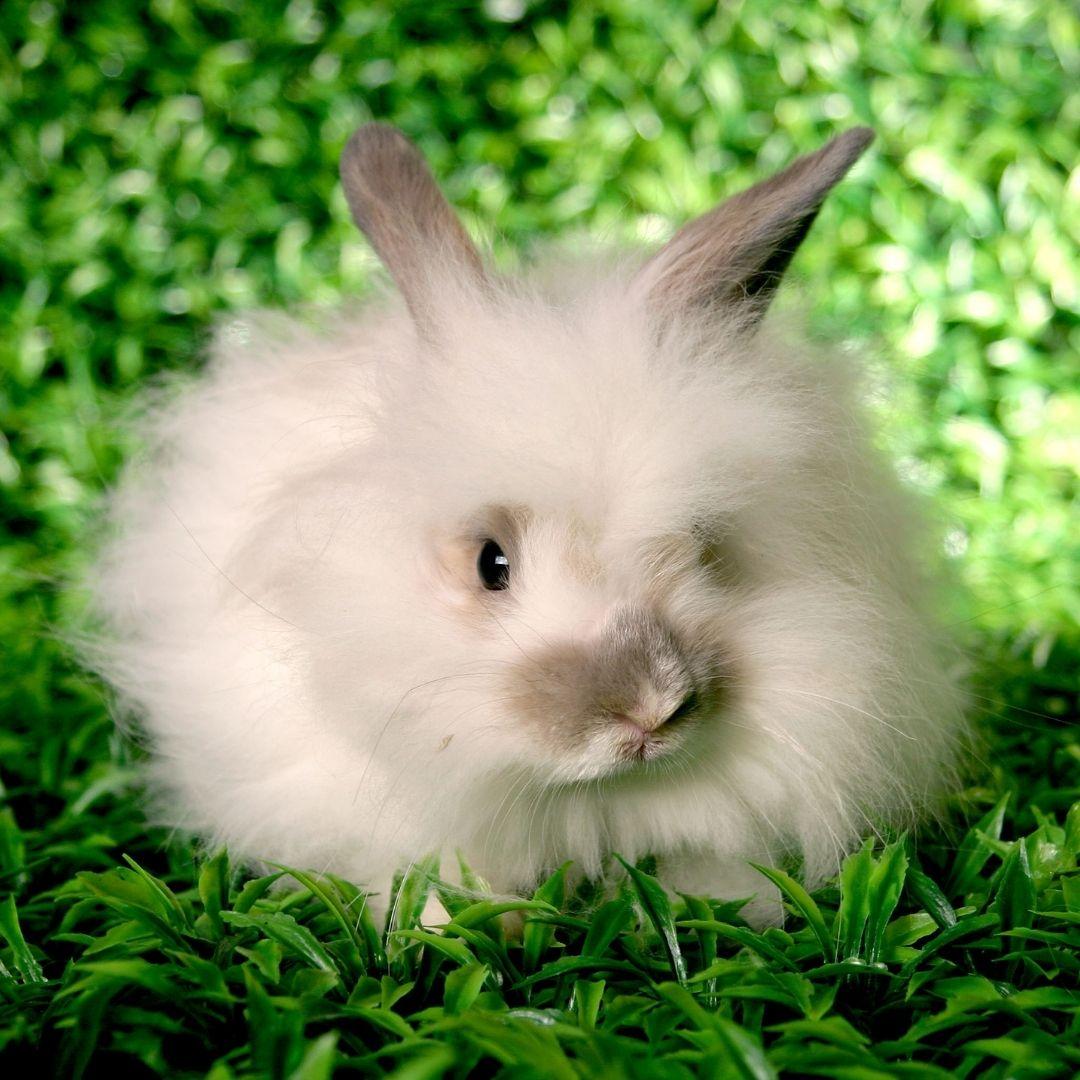
Grooming long-haired rabbits requires an investment of time, especially if you are new to the task. It will take you and your bunny longer to get used to the process at the beginning. Give yourself time. Give your bunny plenty of breaks. Don't be afraid to do smaller sessions over several days, if it feels overwhelming.
Giving your bunny some 10-15 minute breaks is a good idea. It allows them to use the litter box, get a bite to eat, stretch his legs and generally de-stress a little. Grooming is not a fun experience even for the most laid-back rabbit. They appreciate the occasional rest period (and treat!).
Avoid clipping your bunny completely to the skin, especially in winter. Even if you live in a place with mild winters, the temperatures still get cold enough to be dangerous for a closely shorn rabbit. In the summer, make sure his pen is not directly in front of a fan or air conditioning unit and provide protection from drafts.
Rabbit skin is delicate, even more so for long-haired bunnies. It's thin and elastic, which means you have to be careful when you tug on the piece of fur you want to clip. If you tug too much, you may not see the skin underneath and cut it instead. This is a particular problem if the fur being cut is easily stretchable. For this reason, I like to use blunt-nose scissors that have a slight upward curve at the end.
Not all long-haired bunnies are the same. Some have fur that feels like you are cutting through a field of cotton balls. Others have fur that resemble cotton candy (but without the stickiness).
Be religious about grooming your long-haired bunny. Short-haired rabbit owners are able to push off grooming their bunny for a week or two without ill effect, but long-haired bunny owners are usually not that lucky.
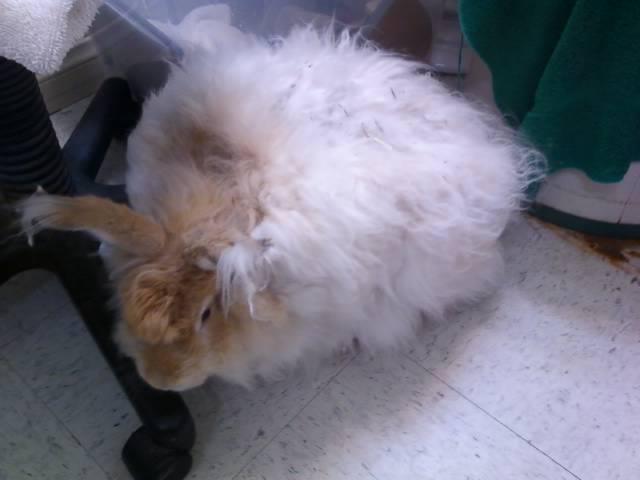 Marmalade
MarmaladePhoto taken at BunnyLuv Rabbit Resource Center.
When Your Angora's Coat Is Not in Good Shape
Several years ago, I had the pleasure of meeting Marmalade. He was a 10lb (4.5kg) German Angora mix. Unfortunately, Marmalade had never been groomed in his life. His body was covered in a 4-inch mat of thick fur, which was, undoubtedly, very uncomfortable for him. It took roughly 12 hours over several days to clean him up. However, Marmalade was very patient and a sweetheart.
Wool coats like Marmalade's, don't really shed, but rather, get thicker over time. Therefore, you cannot wait to groom these bunnies until you start to notice loose hair everywhere in your house. This sort of coat will just become densely matted.
Grooming Long-Haired Rabbits: The Tools
CombA wide-tooth comb is essential for loosening mats and keeping long fur tangle-free. Use this comb to maintain the coat between clipping sessions. |
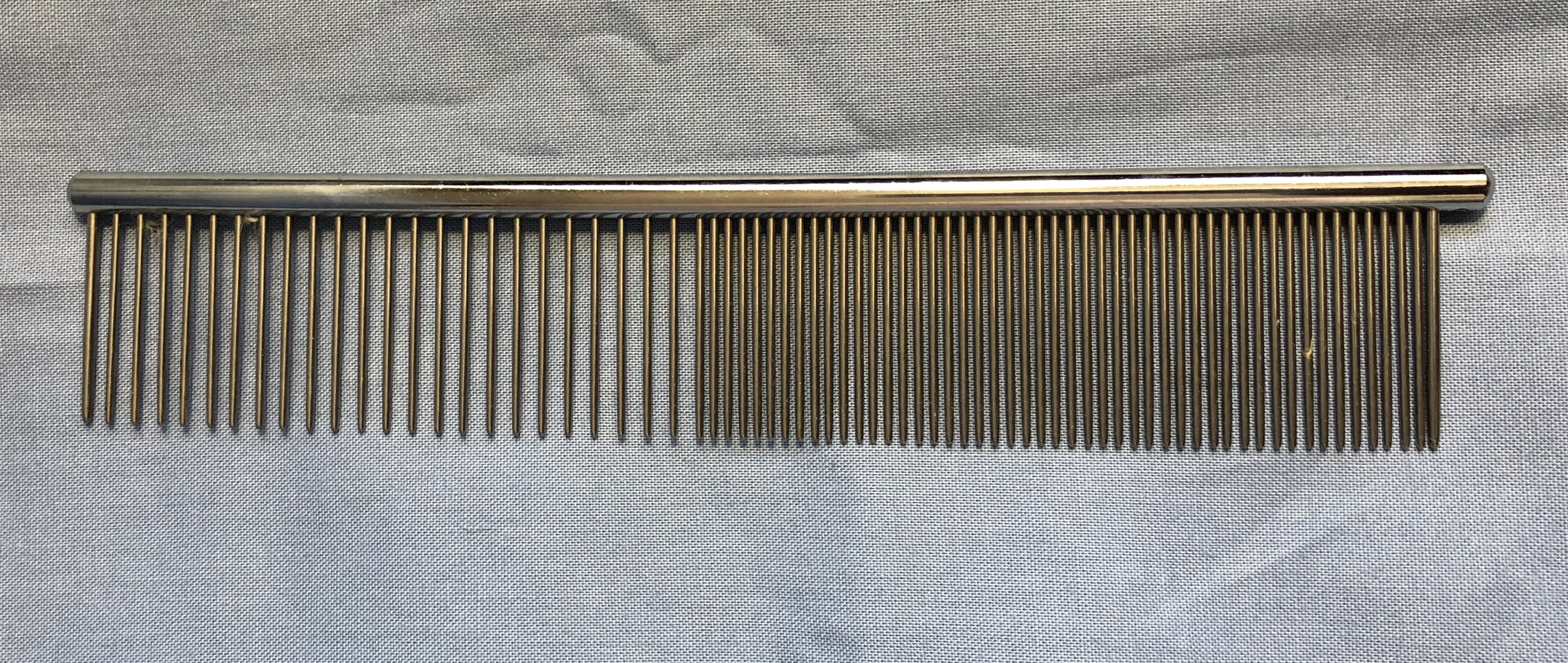 Greyhound comb Greyhound comb |
ScissorsCurved scissors with a blunt tip reduce the chance of accidentally cutting your bunny, especially if you are working in sensitive areas such as the groin. They are essential to have when you need to get underneath a mat in order to remove it. Make sure the scissors are always sharp. ClippersUnless you have a single-mane Lionhead, you will need a quality set of clippers. Cheap and/or cordless models will not have the power to plow through wool fur. Some brands of clippers may be louder than others. This just means that a bunny may need to get used to the sound and vibration of the clipper. Certain models, like the Wahl KM10, are designed to be quieter. Joyzee is a cordless all-in-one clipper that can also be used on rabbits. An all-in-one means that the blade is adjustable. You can change how closely you wish to trim the coat with a simple flip of a switch, rather than stopping to switch the blade out. If you have more than one Angora and/or you wish to have more in the future, consider investing in the Aesculap German Red Clipper. This brand is a reliable, heavy duty tool that can cut through the most dense coat. It doesn't overheat as quickly as other brands, so grooming takes less time. BladesIt's good to have more than one blade on hand, as blades get hot during clipping. You can easily replace hot blades in the middle of a session. Alternatively, you can take longer breaks to let a blade cool. The number on the blade corresponds to the length of the cut. The higher the number, the closer to the skin it will cut. Vet clinics will use a 40 or 50 blade to completely shave the fur in preparation for surgery. A 40 or 50 blade will be useful to get underneath a mat or if you need to do a sanitary clip for a disabled bunny, but generally speaking, a 7 or 10 blade will be sufficient for the whole bunny. For narrow spaces, use the 5/8W blade. Clipper blades should be resharpened about every 4-5 sessions, depending on how woolly your bunny is and how much he mats. Make sure to brush out the fur and oil the blades between each grooming session. |
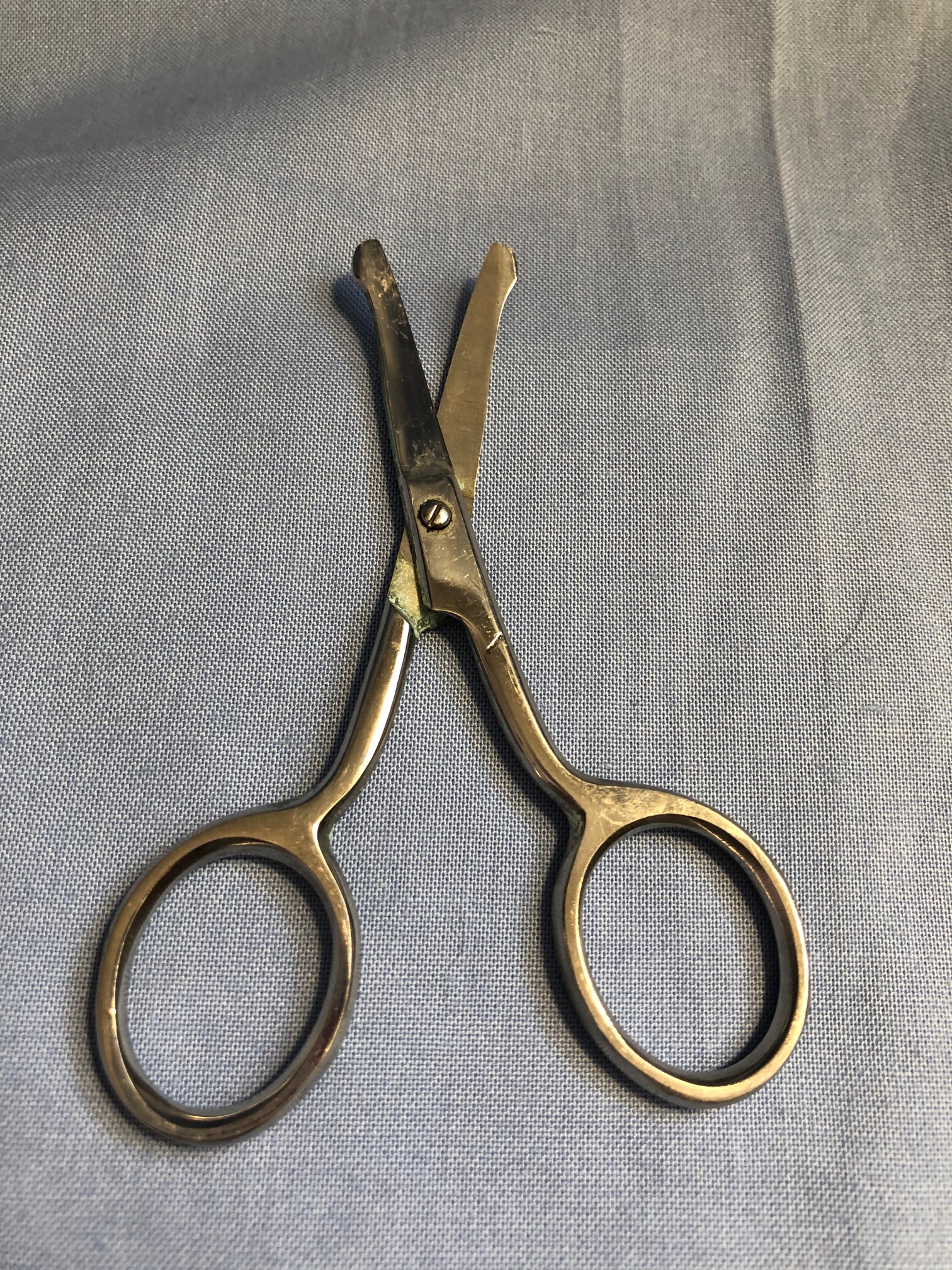 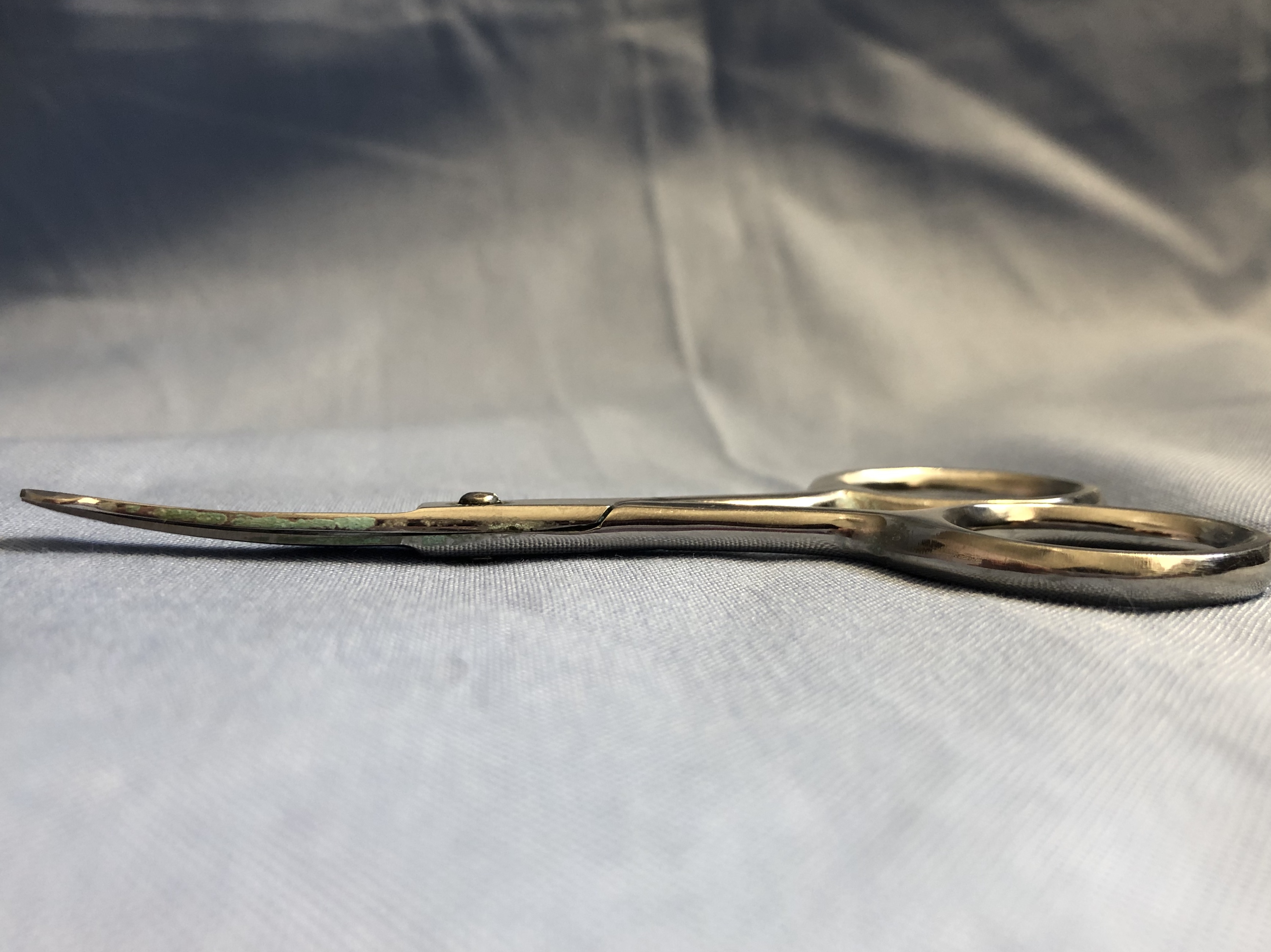 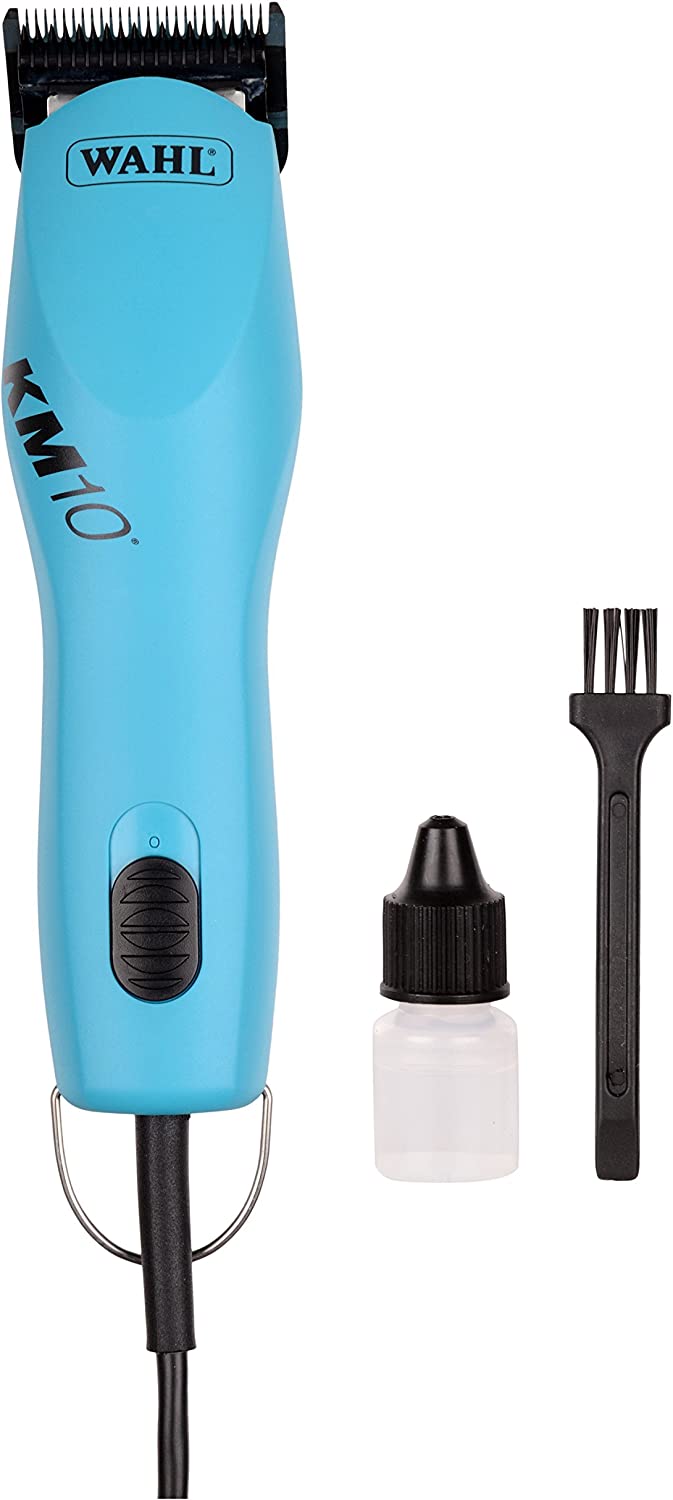 Wahl KM10 Clipper Wahl KM10 Clipper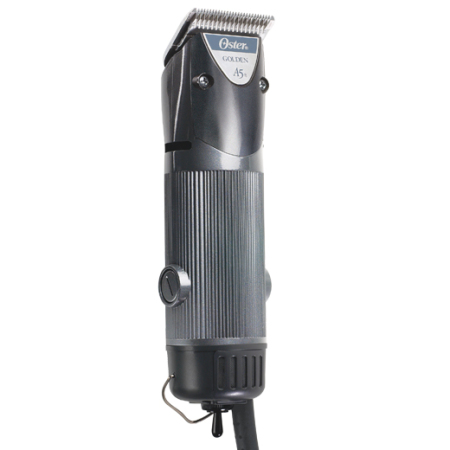 Oster Golden A5 2-speed clipper. Oster Golden A5 2-speed clipper. 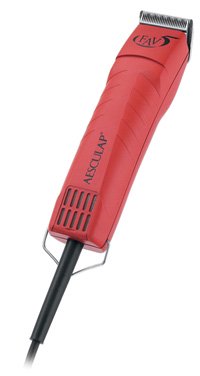 Aesculap German Red Clipper. Aesculap German Red Clipper.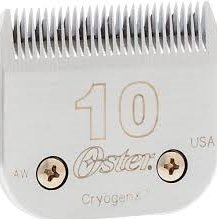 |
Grooming Long-Haired Rabbits: The Process
Minnesota HRS Educator, Amy Ramnaraine, produced a great step-by-step video, How to Clipper a Rabbit Safely and Kindly.
A couple things to keep in mind while clippering:
- Keep your clipper blade (or for that matter, your scissors) parallel to the body of the bunny. This will greatly reduce the chance of you injuring your bunny.
- Clipper blades get hot fast. Frequently check your blades. If it's too hot for you, it's definitely too hot for your bunny.
What to Do If Your Bunny Is a Hot Mess
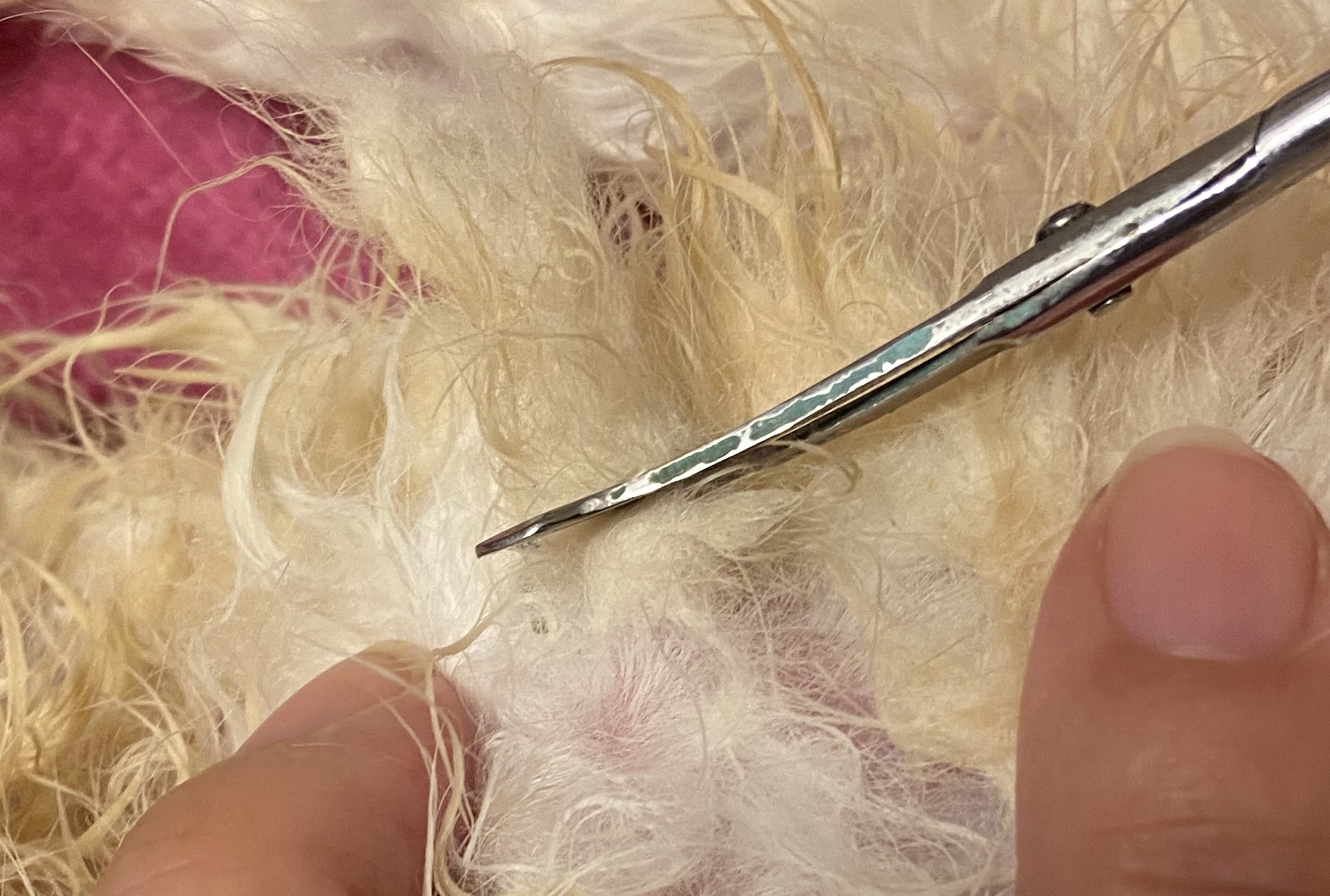 I'm trimming away the hair that is holding the mat in place.
I'm trimming away the hair that is holding the mat in place.You might be in the situation in which you took in the neighborhood stray bunny, who happens to have long-hair, or you have been intimidated by the thought of holding sharp objects against your bunny's skin.
The good news is that you can still groom your bunny as described in the video above. It will just take more time. Some tips to remember.
- Mats: Sometimes you can just comb out a knot. However, if it has already formed a mat, you need to cut it out. The way to do that is to slip under the mat. You should be see the hair attached to the mat. It's that hair you need to remove. If the mat is literally against the skin (which is common for seriously matted bunnies like Marmalade), trim away as much of the actual mat as possible and let it grow out a bit. In 2-4 weeks, take another look at it. By then, you should be able to slip your scissors or clippers underneath the mat to finally free it.
- Take it one step at a time. Start at one spot (usually behind the neck) and work your way back.
- Be extra slow in the groin area. There are lots of curves to navigate with the scissors. You can cover the actual urogenital opening and anus with your hand to protect it as you trim that area.
- Know where the tail is. The base of the tail can get very matted and look hidden. Find the tail and protect it with your opposite hand as you clip that area.
- Make sure your bunny can move. Mats like to happen behind the legs or under the armpits and trap bits of hay. Make sure you trim these areas so the bunny can move freely.
- Give you and your bunny plenty of breaks. If you or your bunny feel overwhelmed, break down the task over several days.
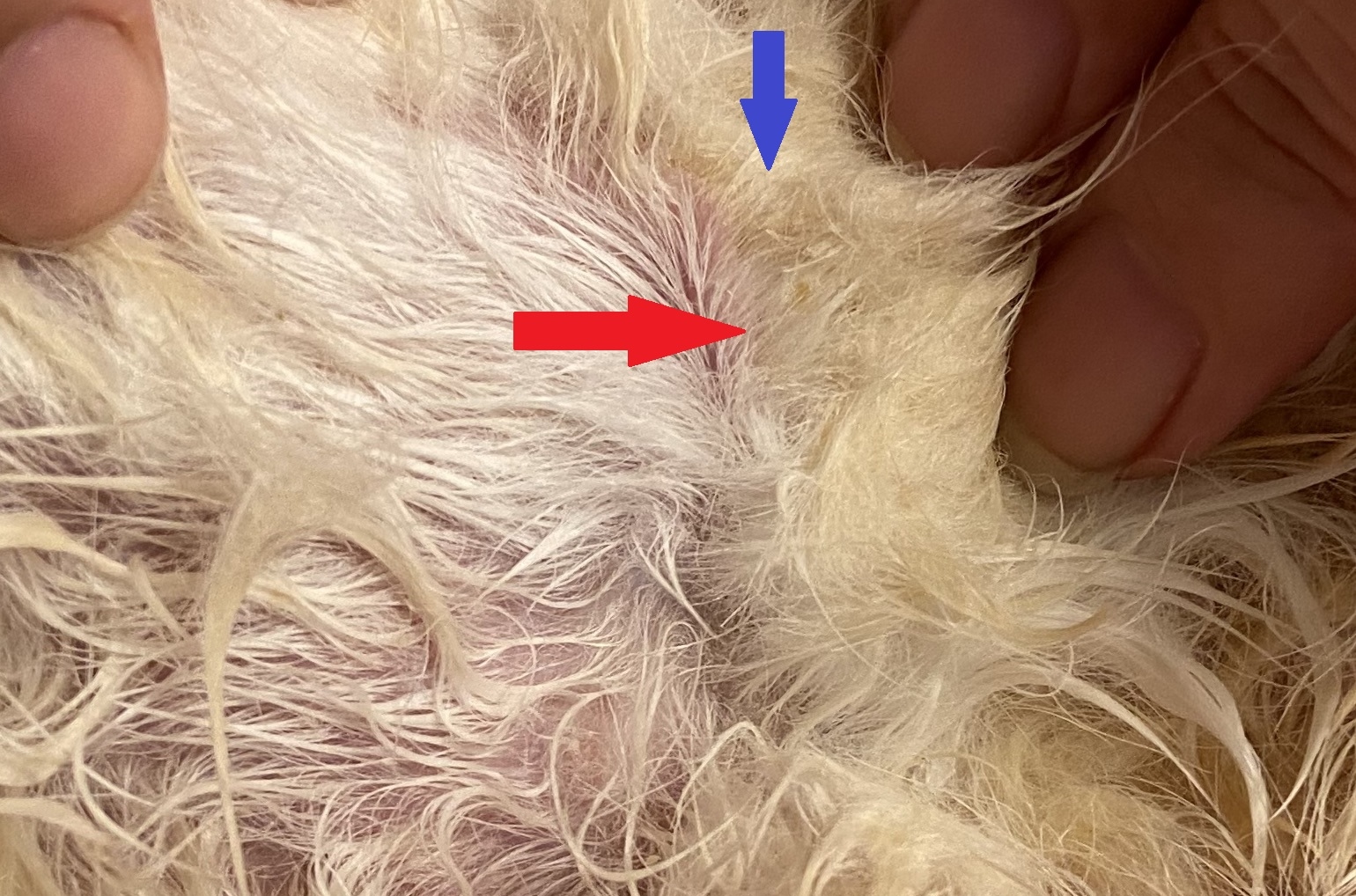 The blue arrow shows the mat and the red arrow points to the fur that holds the mat in place. This fur is what you want to cut to free the mat. The blue arrow shows the mat and the red arrow points to the fur that holds the mat in place. This fur is what you want to cut to free the mat. |
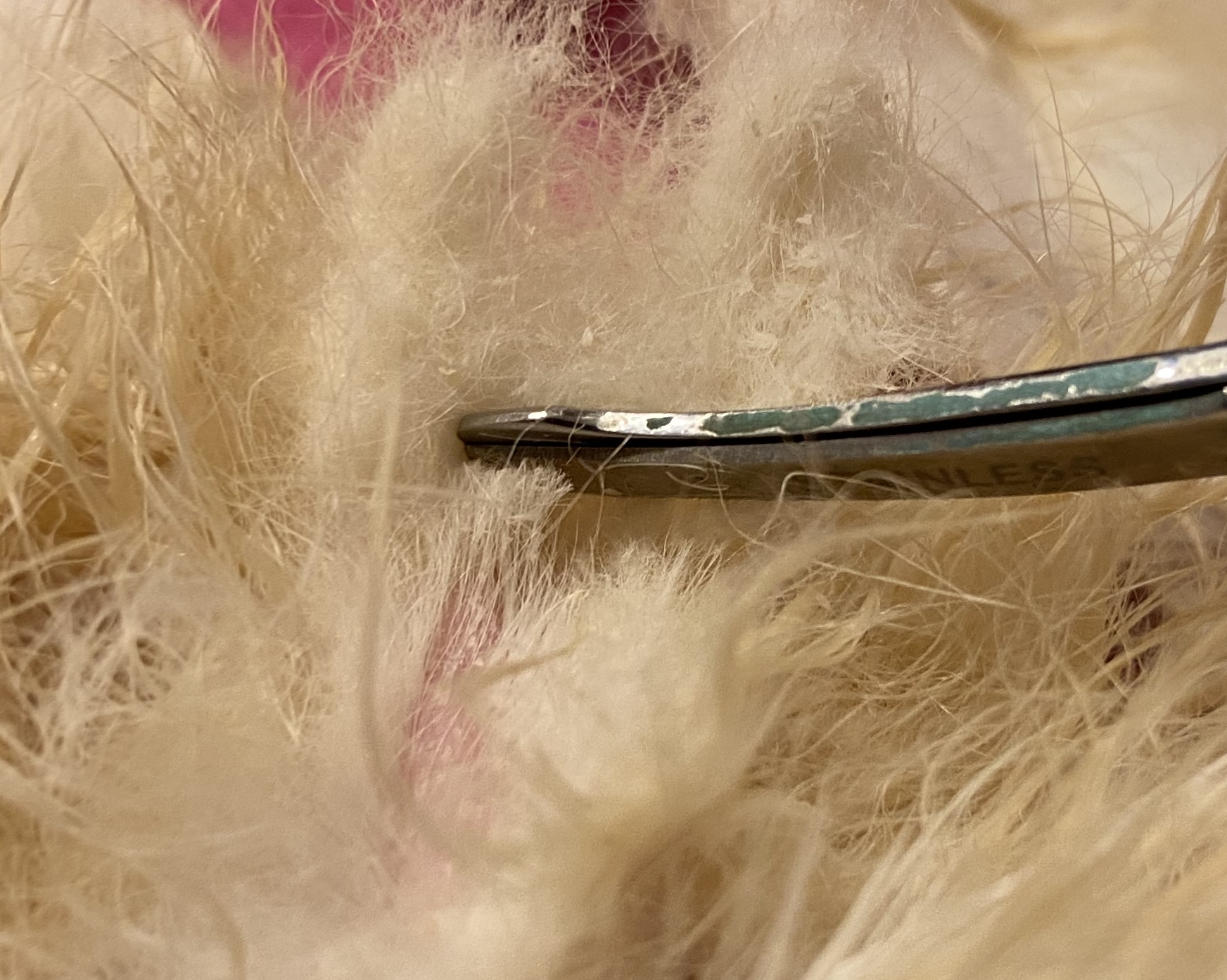 Slip the scissors or clippers under the mat. Your cutting tool should be parallel to the skin. Slip the scissors or clippers under the mat. Your cutting tool should be parallel to the skin. |
For Those Who Like to Spin and Knit
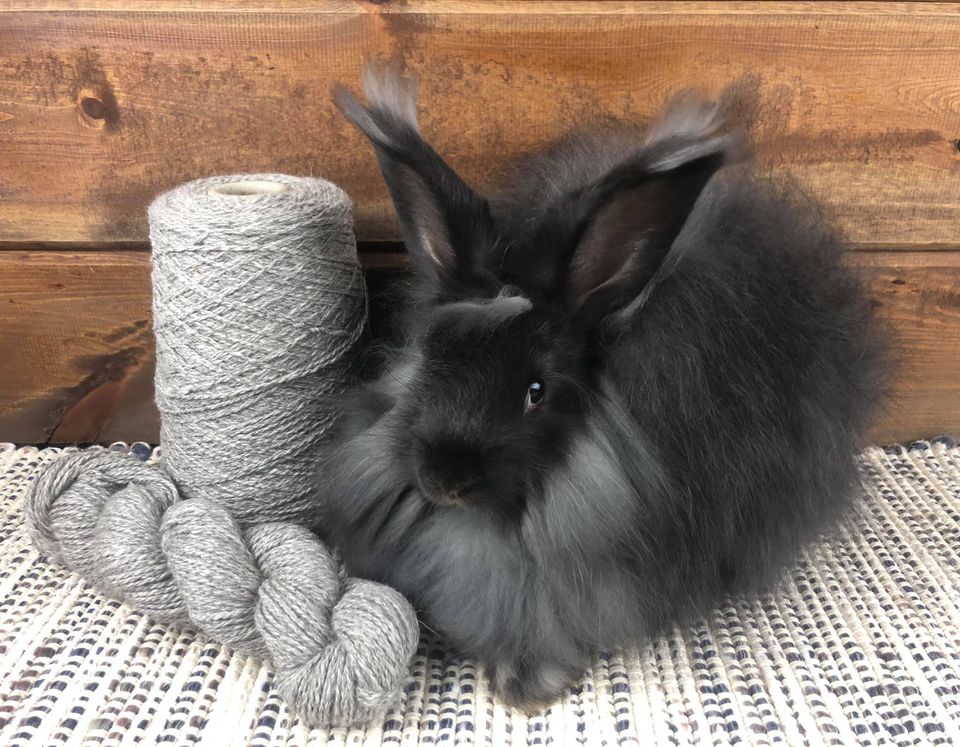 Young black German Angora standing next to yarn spun from her grandmother's coat.
Young black German Angora standing next to yarn spun from her grandmother's coat.Photo courtesy of Greenleaves Angoras.
There are a few people who enjoy gathering the wool, dyeing and spinning it and, finally, creating something magical with the yarn. For these hobbyists, grooming long-haired rabbits is part of the joy. They will use wool taken from one of the several different breeds of Angoras.
To learn more about the process of handspinning yarn, check out this video here. Don't want to commit to a spinning wheel? Here's how to create yarn with just a spindle.
Please note, a few years ago, PETA had brought attention to commercial fur farms in China, where the fur was literally ripped from the rabbit's body. This is not how wool should be gathered - ever! Wool is collected by either shearing (with clippers or small scissors) or gently plucking already shedding fur. At no point should a rabbit ever be injured or in pain during the grooming process.
English AngoraThe English Angora is one of the smallest of the recognized Angora breeds, weighing in between 5-7.5lbs (2.27-3.4kg). The face (except for the area around the nose), ears and front feet are covered with fur (furnishings). | |
French AngoraThe French Angora is bigger than the English Angora and can be distinguished by the face and front feet clear of furnishings. The ears may be either plain or have small tufts at the very tips of the ears. A French Angora can weigh up to 10lbs (4.5kg). | |
Giant AngoraFlemish Giant and German Angora genetics were used to create this large breed. The minimum weight is 12lbs (5.4kg). These rabbits will have tufts of fur on the forehead and cheeks as well as on the ears. | |
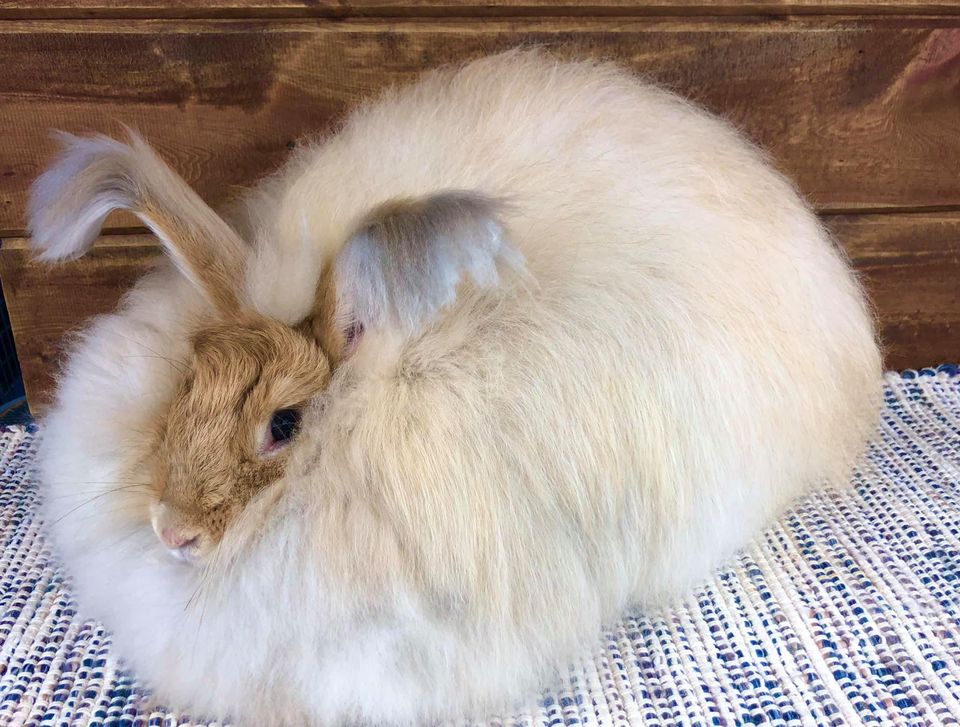 Photo courtesy of Greenleaves Angoras. German Angora (Carmel) Photo courtesy of Greenleaves Angoras. German Angora (Carmel)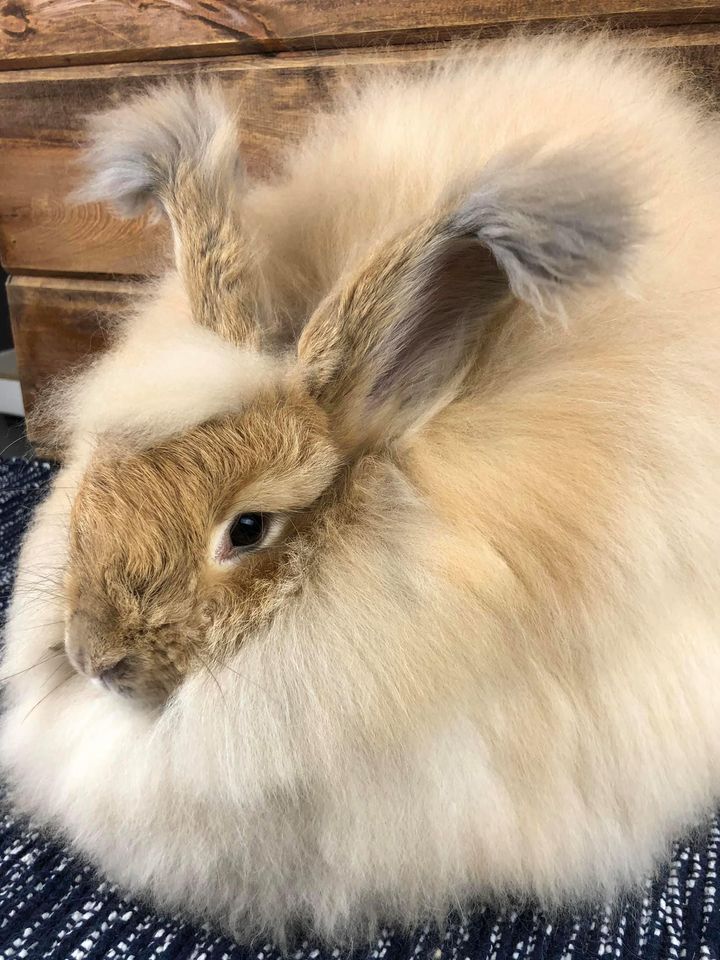 Photo courtesy of Greenleaves Angoras. German Angora (Fawn) Photo courtesy of Greenleaves Angoras. German Angora (Fawn) |
German AngoraThese rabbits can weigh up to 12lbs (5.4kg). While the English and French Angoras produce about a pound of wool per year, the German Angora can produce as much as 4.5lbs (2.0kg) a year. The German Angora will have some furnishings on the face, but much less than the English Angora. They come in a wide variety of colors. 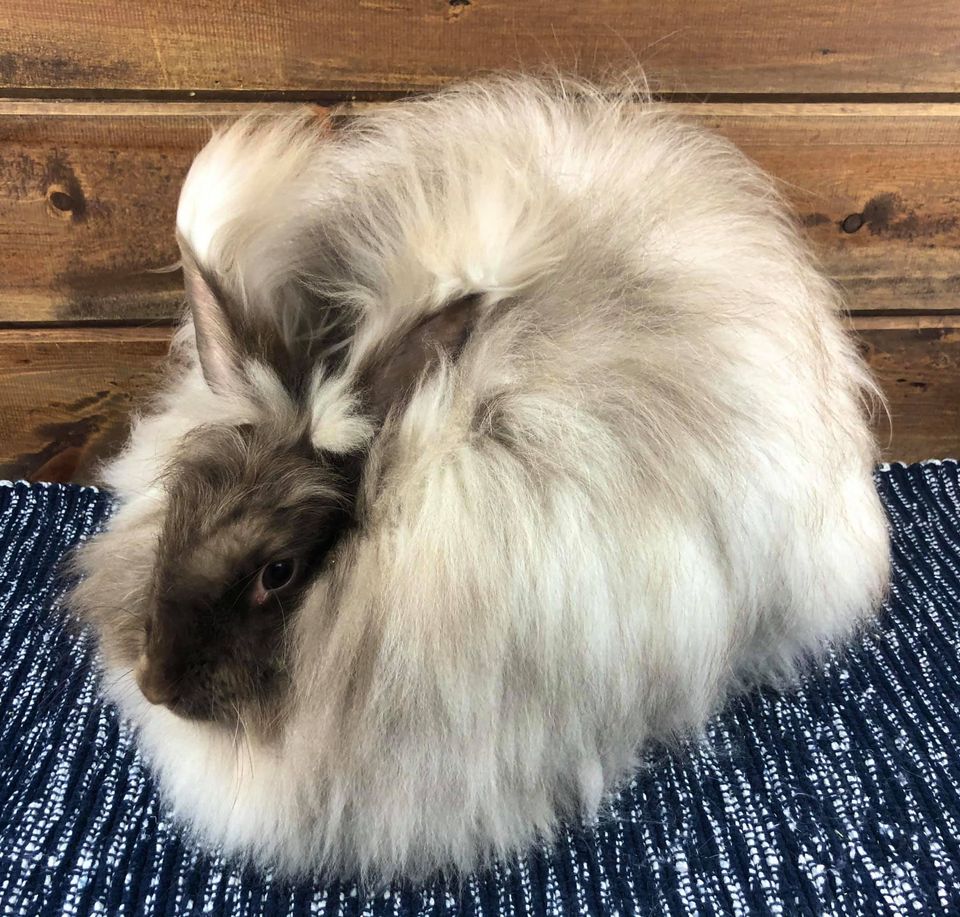 Photo courtesy of Greenleaves Angoras. German Angora (Chocolate) Photo courtesy of Greenleaves Angoras. German Angora (Chocolate) |
Satin Angoras
|
This breed was created by combining the Satin and the French Angora. When you part the coat, you should be able to see a sheen. It is the outer shell of the hair shaft that is responsible for the rich color and softness of the fur. Although the Satin Angora can be weigh up to 10lbs (4.5kg), these rabbits generally do not produce a lot of wool, compared to other Angoras. 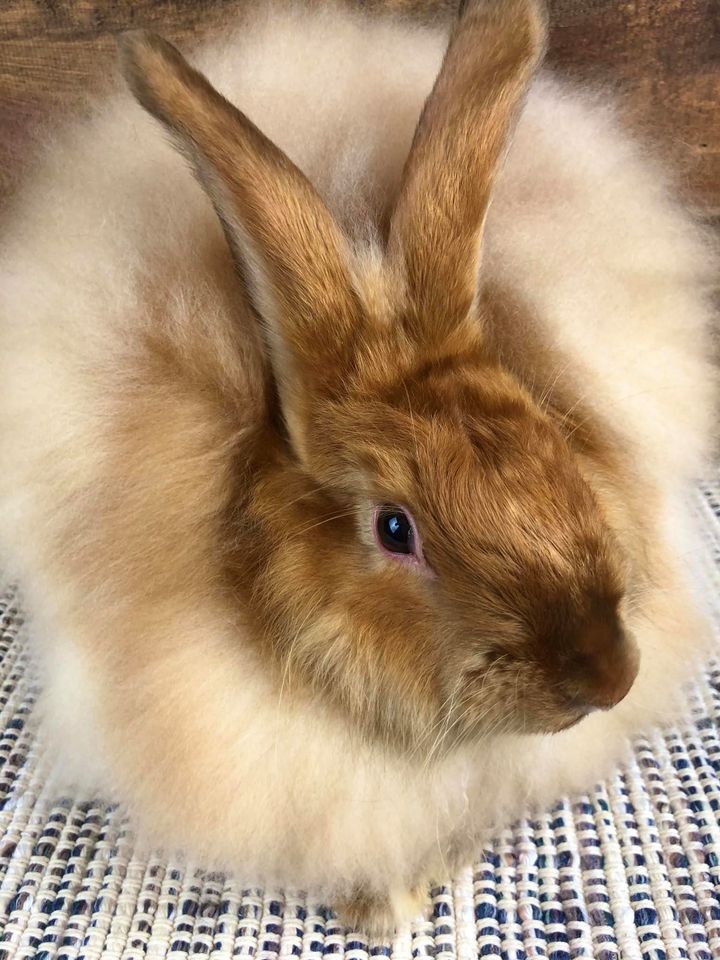 Photo courtesy of Greenleaves Angora. Satin Angora (Chocolate Tortoiseshell) Photo courtesy of Greenleaves Angora. Satin Angora (Chocolate Tortoiseshell) |
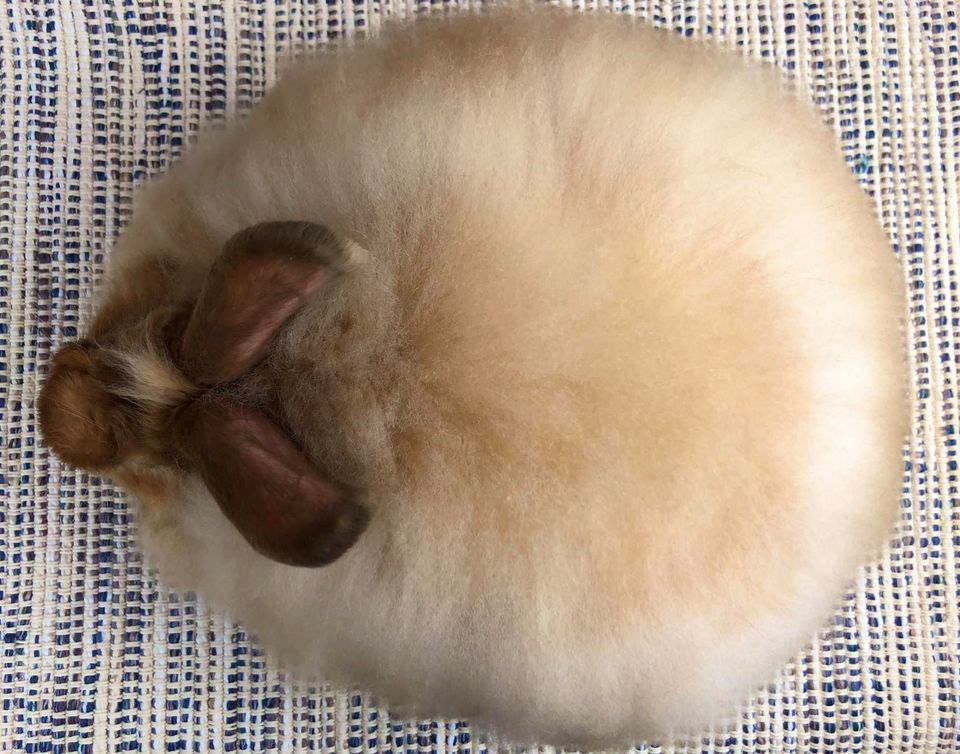 Photo courtesy of Greenleaves Angora. Satin Angora (Chocolate Tortoiseshell) Photo courtesy of Greenleaves Angora. Satin Angora (Chocolate Tortoiseshell)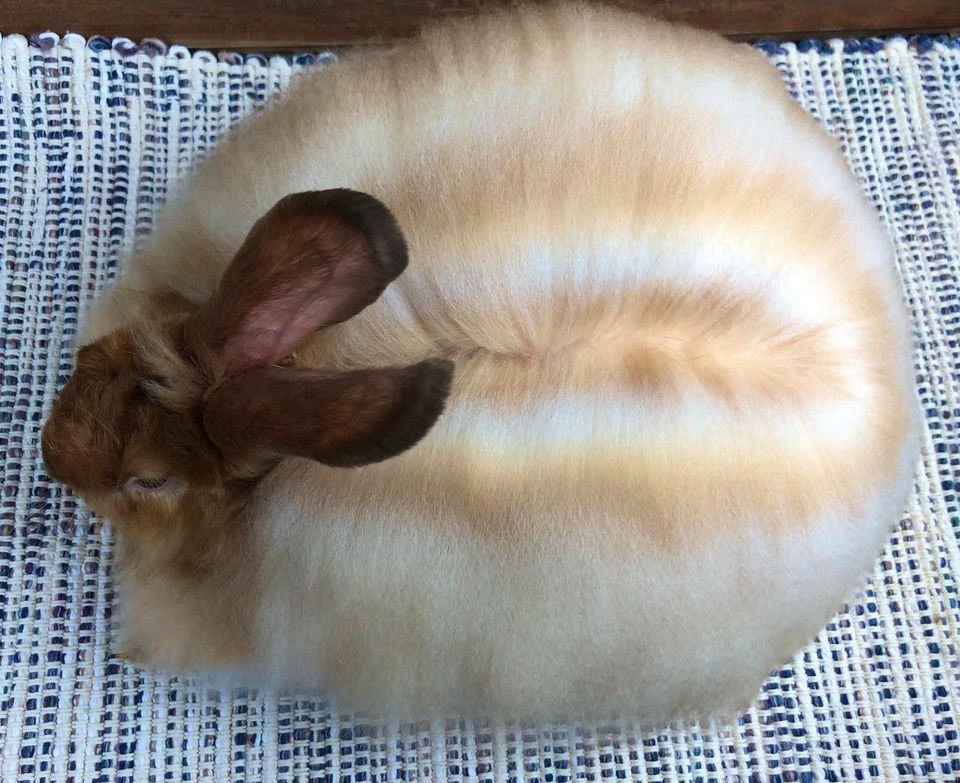 Photo courtesy of Greenleaves Angora. Satin Angora (Chocolate Tortoiseshell) Photo courtesy of Greenleaves Angora. Satin Angora (Chocolate Tortoiseshell) |
